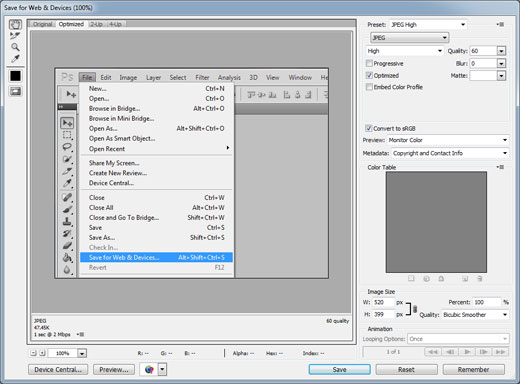Register your business information on Google Maps for free
Introduce your business on the first page of Google for free. Learn how to register business information on Google Maps for free.

You know the great effect of optimizing site images to increase speed. Most of the users don't know how to optimize
You know the amazing effect of optimizing website images to increase speed. Most users don't know how to optimize website images. In this article, we will examine how to learn Optimizing Website Images to Increase Speed.
Graphic images and functional images are important parts and factors of the website's beauty.
But as much as using images makes a site beautiful, it also has an impact on its speed, and this relationship is directly related to SEO or site optimization.
Using too many images increases the size of the page and consequently slows down its loading speed.
What should be done to prevent slowdown through optimizing site images?
By optimizing site images, you can save a lot of page space, and this is something that most webmasters don't pay attention to.
Suppose you have 10 images on this page, each 40 KB in size, and their total size is 400 KB. Now, if we reduce its size to 20 by optimizing it, it will be 200 KB, and this will have a direct impact on the speed of the site and Site SEO.
To better understand the impact of optimizing website images, I will review several image storage formats below.

As you can see in the image above, an image is saved in three formats.
The first saving is in png format and its size is 40 KB, the next saving is in jpg format, which is usually the format most webmasters save images in, with an output size of 52 KB, and finally the jpg format with Optimizing site images, with an output size of 16 KB.
The impact of optimizing site images is very clear in the example above.
By comparing the size of the optimized image and the jpg image, you can see how much heavier the size of pages that use a large number of photos or graphics is than optimized pages.
Now, if you also use CMS like WordPress, the page size will increase even more.
Because in WordPress or other CMS, page dimensions do not change in different sizes.
For example, if you use an image in different sections of your site, the dimensions of that image do not change, only its size increases and decreases. This means that the original dimensions are loaded in other small sections, and although the user sees the small image, the browser loads the large images, and the site speed decreases.
In this section, we will discuss how to optimize website images using Photoshop.
Typically, to save images in Photoshop, I click Save from the File option and save it in the desired format.
But to optimize images, the storage method is different.

As you can see in the image above, to save the image and optimize it, I click on the File option and select Save for Web.
After that, I set the image format to jpg and select its quality as 60.
The lower the quality, the smaller the image size, but the lower the quality, so 60 is a good number.
Finally, click on the Save option to save the image. This way you can reduce the size of a large number of images.
When you think about optimizing your site's images, one of the important things to consider is choosing the right format to save your images in.
Choosing the right image format can help improve page loading speed and enhance user experience.
One of the most popular formats for web images is JPEG.
This format is suitable for images with complex colors and high-quality photo images.
However, if you don't need to preserve the fine details of the image, a PNG or GIF format may be more suitable.
The PNG format is suitable for images with transparent backgrounds and fine details, while the GIF format is suitable for animated images and icons.
Also, for images that require high quality and detail retention, you can use WebP or HEIC formats.
These formats offer the most optimal quality at a lower size and can help improve page loading speed.
So, before choosing an image format for your site, consider your specific needs and choose the format that offers the best quality at a lower size and helps improve your website's performance.
Source » Itroz Academy

Turning followers into customers through trust-building, a simple buying journey, and value-driven content; a complete guide to increasing sales on social media.

why some Instagram posts generate sales, with practical tips on audience persona, content value, storytelling, visuals, CTA, and consistency.

Complete guide to bringing customers back to your Instagram page with continuous engagement, valuable content, stories, special offers, and loyalty boosting.

why Instagram sales suddenly drop and learn practical ways to recover through better audience insights, improved content, and stronger engagement.
Comments (0)